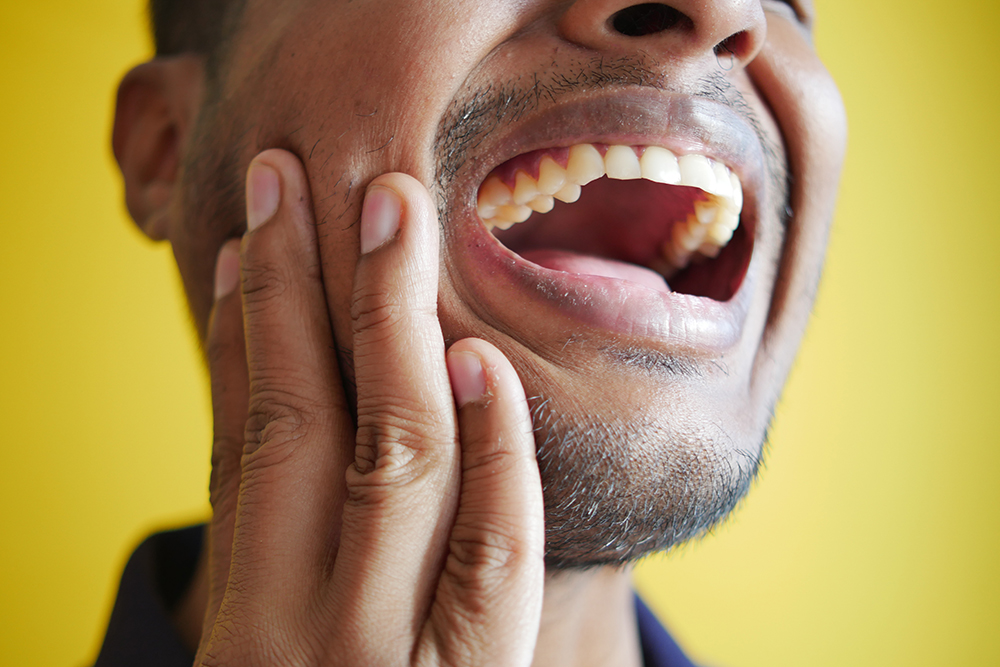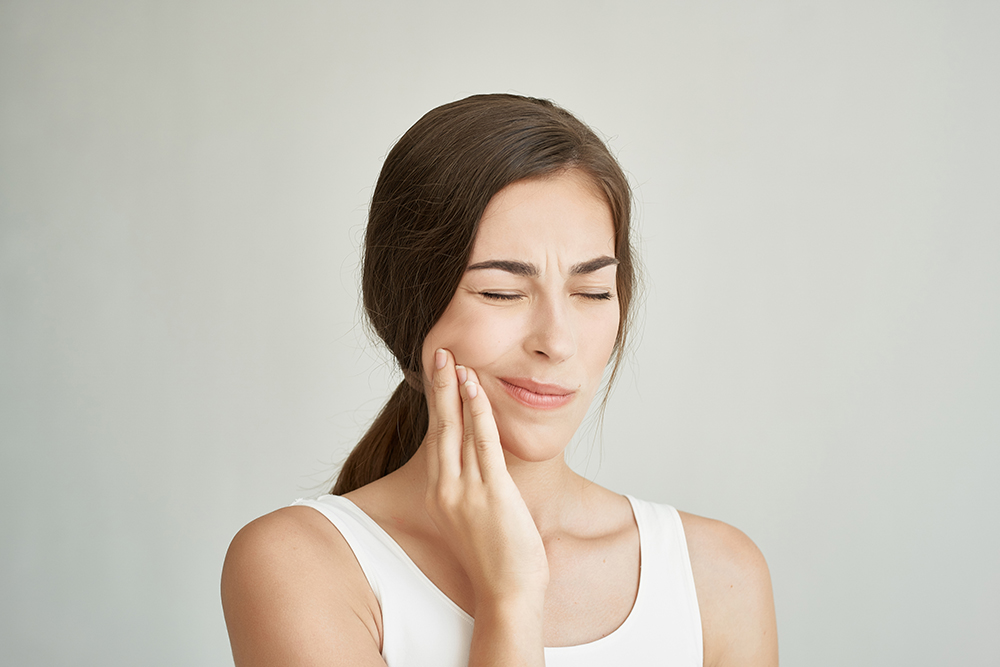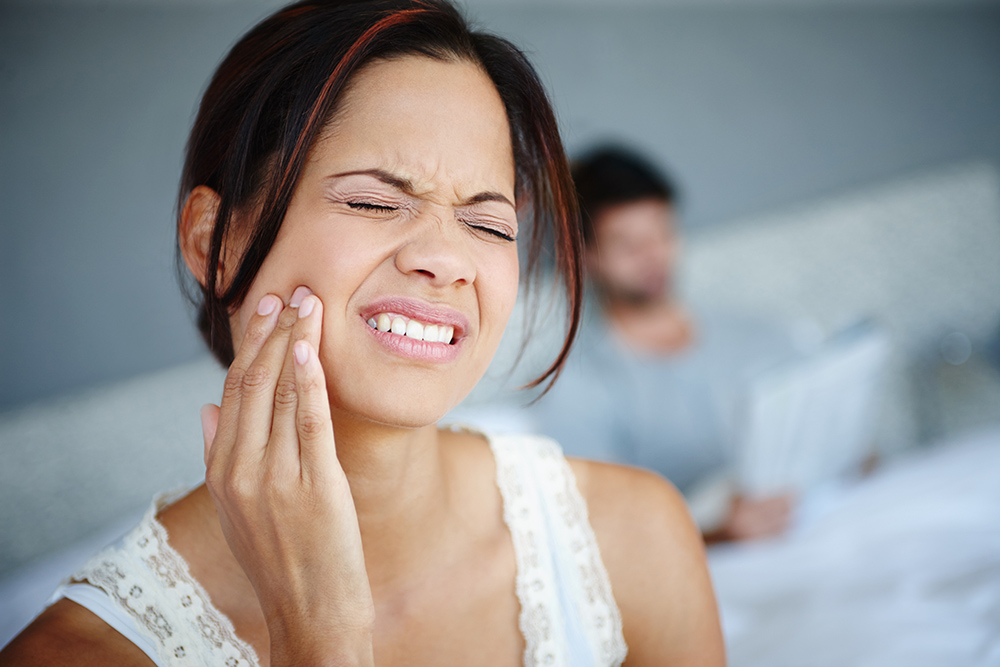Contents
Is your headache accompanied by pain in or difficulty moving your jaw? If you said yes, then your headache may have been triggered by a temporomandibular joint (TMJ) disorder. Read on to learn more about TMJ disorders, how and why they can cause headaches, and how a physical therapist can help treat your TMJ disorder and headaches.
What is a TMJ disorder?
The temporomandibular joint is your jaw joint right in front of your ears. It is the joint that allows you to chew, talk and perform other common tasks every day. Problems that occur with the TMJ are referred to as TMJ disorders or TMJ dysfunction.
TMJ disorders can cause a plethora of symptoms including:
- Jaw pain.
- Difficulty opening and closing your mouth.
- Bloodshot eyes.
- Pain behind your eyes.
- Headaches.
- Earaches.
The symptoms of a TMJ disorder can range from mild issues and non-life-changing symptoms to severe and debilitating symptoms that make it hard to do normal daily activities.
Between 5% and 12% of the adult population have some form of a TMJ disorder, and the condition is twice as common in women than men. Individuals between 20 and 40 years old are also the most likely to develop TMJ disorders.
TMJ disorders can be caused by a jaw injury like a blow to the jaw from a fall. Bruxism, or grinding or clenching your teeth, is another common TMJ disorder cause. Stress, jaw joint arthritis and teeth that don’t fit together like they should can also cause TMJ disorders.
Why does a TMJ disorder cause headaches?
A TMJ disorder can cause a headache because your jaw and the rest of your head are connected. They’re connected by muscles that control your jaw and by nerves that send signals to your jaw.
These connections are what can trigger headaches if you have a TMJ disorder. If your jaw is painful, the nerves running from your jaw into your head allow that pain to radiate into your head, resulting in a headache.
Also, the muscles that help your jaw joint move can often become tense and painful when you have a TMJ disorder. Such problems with your jaw muscles can also cause you to tense other muscles in your head and neck and trigger a headache.
What are common signs that your headache is being caused by a TMJ disorder?
The first sign that your headache is actually being caused by a TMJ disorder is that you will have all the other symptoms of TMJ disorders that are listed above.
Another sign is you’ll be missing specific symptoms that are often caused by other types of headaches. For instance, you won’t feel the nausea and sensitivity to light, sounds or smells that migraine headaches commonly cause.
How can physical therapy help address TMJ disorder-related headaches?
Physical therapists can do a lot to reduce headaches and other symptoms of a TMJ disorder. Once they confirm that your headaches are being triggered by a TMJ disorder, they can build you a physical therapy plan that includes beneficial treatments like:
- Soft tissue manipulation — This technique falls into a category called hands-on or manual therapy. During soft tissue manipulation, a physical therapist uses their hands to apply pressure to specific muscles and other soft tissue. This technique can be helpful for TMJ disorder-related headaches as it can help ease tension in the jaw muscles that is causing your headaches.
- Therapeutic stretching — Specific therapeutic stretches are another way physical therapists can help ease tension in the jaw muscles and ease headaches. Your therapist can show you how to perform stretches that directly target your tight, painful jaw muscles. They can even help you learn how to do your stretches when you feel a headache coming on, as this may help stop it in its tracks.
- Joint mobilization — This is another type of manual therapy. It involves your physical therapist using their hands to gently move a joint through its normal range of motion. For example, your therapist may use joint mobilization to gently move your jaw joints through their normal range of motion when you have a TMJ disorder. Using this technique, your therapist can help loosen up the muscles that control your jaw joints, reduce pain and, hopefully, prevent future TMJ disorder-related headaches.
Lattimore PT is ready to treat your TMJ disorder-related headaches
It may seem like treatment for headaches related to a TMJ disorder can be difficult to find, but Lattimore Physical Therapy offers treatment options that can address your headaches.
Our physical therapists will start by talking with you to discover what symptoms you’re experiencing and how severe they are. They’ll also perform a gentle physical examination of your jaw. Using the information they’ve gained, our specialists can then create a custom physical therapy plan for you that’s intended to ease your symptoms, including TMJ disorder-related headaches. Our custom plans can also help you prevent recurrence of headaches related to TMJ dysfunction.
Contact our team today for more information about how we can assist you or to schedule an initial appointment.



